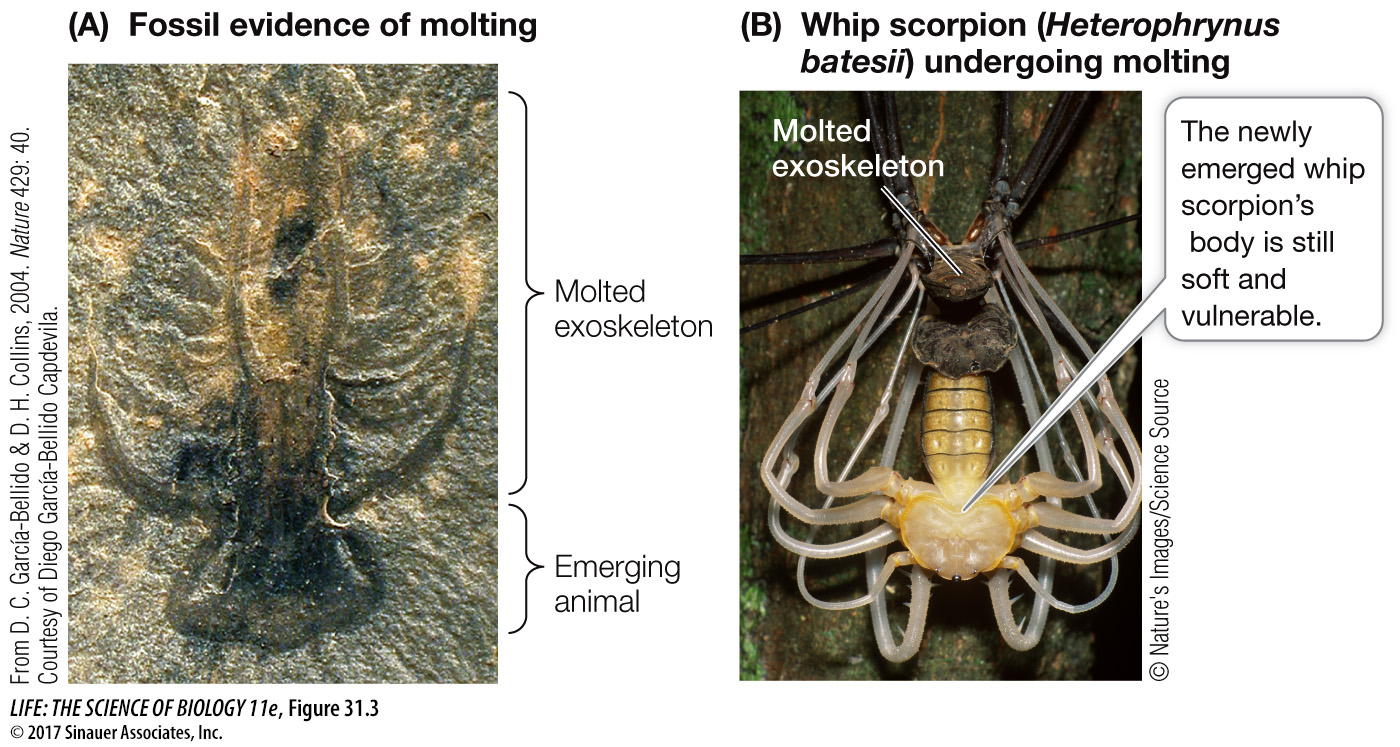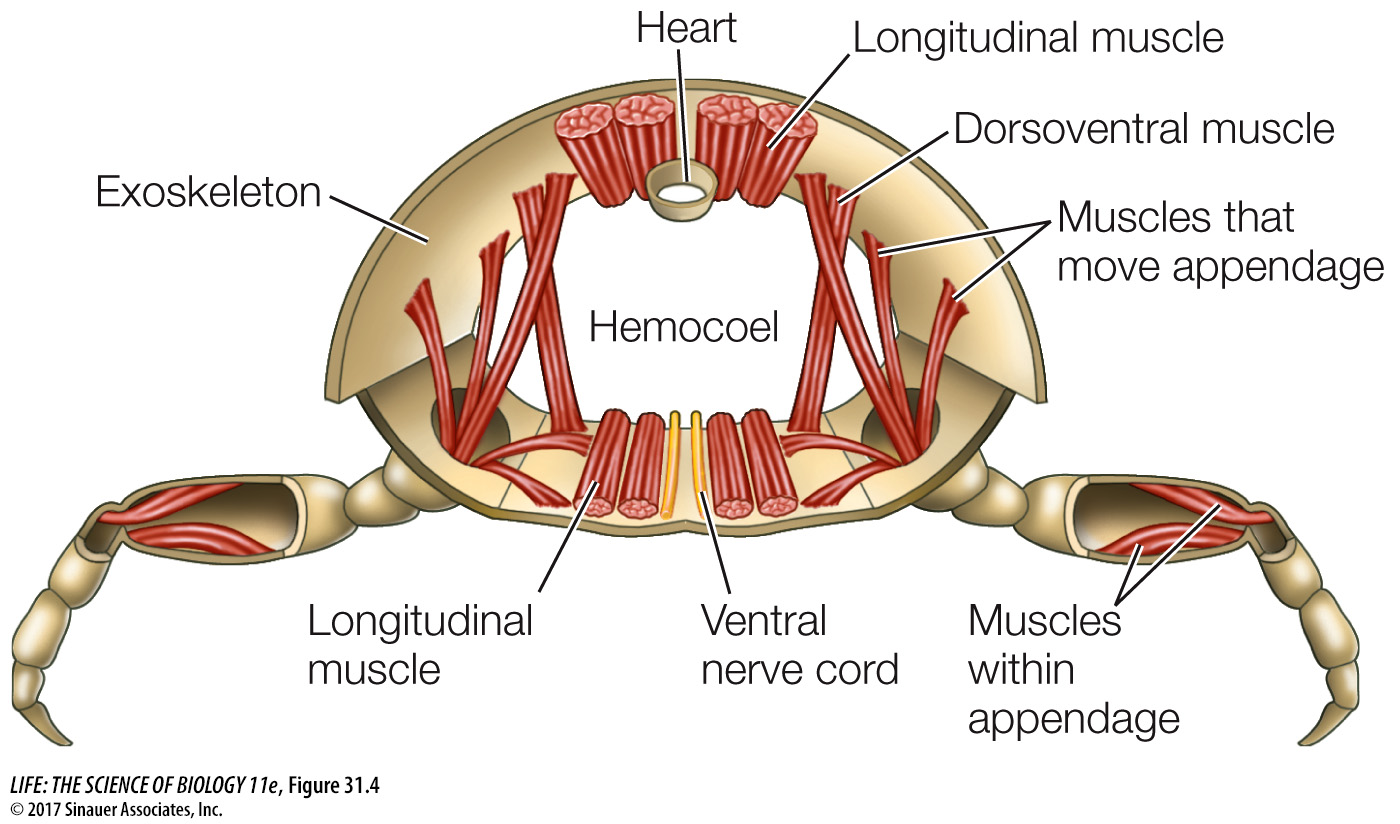Ecdysozoans must shed their cuticles
Ecdysozoans have an external covering, or cuticle, that is secreted by the underlying epidermis (the outermost cell layer). The cuticle provides these animals with both protection and support. Once formed, however, the cuticle cannot grow. How, then, can ecdysozoans increase in size? They do so by shedding, or molting, the cuticle and replacing it with a new, larger one.
Media Clip 31.2 Molting a Cuticle
A fossil Cambrian arthropod preserved in the process of molting shows that molting evolved more than 500 million years ago (Figure 31.3A). An increasingly rich array of molecular and genetic evidence, including a set of Hox genes shared by all ecdysozoans, suggests they have a single common ancestor. Thus molting of a cuticle is a trait that may have evolved only once during animal evolution.

Before an ecdysozoan molts, a new cuticle is already forming underneath the old one. Once the old cuticle is shed, the new one expands and hardens. Until it has hardened, though, the animal is vulnerable to its enemies, both because its outer surface is easy to penetrate and because an individual with a soft cuticle can move only slowly or not at all (Figure 31.3B).
The cuticles of some ecdysozoans, mainly arthropods, function as external skeletons, or exoskeletons. These exoskeletons are thickened by layers of protein and a strong, waterproof polysaccharide called chitin. An animal with a rigid, chitin-
To move rapidly, an animal with a rigid exoskeleton must have body extensions that can be manipulated by muscles. Such appendages evolved in the late Precambrian, leading to the arthropod (“jointed foot”) clade. Arthropod appendages exist in an amazing variety of forms. They serve many functions, including walking and swimming, gas exchange, food capture and manipulation, copulation, and sensory perception. Arthropods grasp food with their mouths and associated appendages and digest it internally. Their muscles are attached to the inside of the exoskeleton. Each segment has muscles that operate that segment and the appendages attached to it (Figure 31.4).

The arthropod exoskeleton has had a profound influence on the evolution of these animals. Encasement within a rigid body covering provides support for walking on dry land, and the waterproofing provided by chitin keeps the animal from dehydrating in dry air. Thus aquatic arthropods were, in short, excellent candidates to invade terrestrial environments. As you will see, they did so several times.